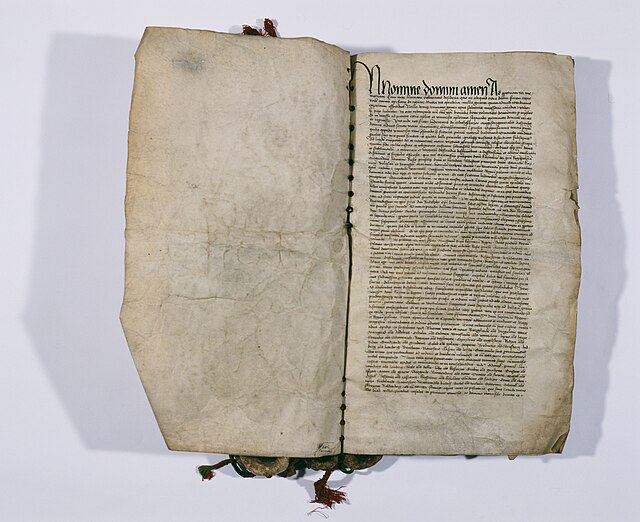Polish–Teutonic War (1519–1521)
The Polish–Teutonic War of 1519–1521 was fought between the Kingdom of Poland and the Teutonic Knights, ending with the Compromise of Thorn in April 1521. Four years later, under the Treaty of Kraków, part of the Catholic Monastic State of the Teutonic Order became secularized as the Duchy of Prussia. The reigning Grand Master Albert of Hohenzollern-Brandenburg-Ansbach became the first Duke of Prussia by paying the Prussian Homage as vassal to his uncle, Polish king Sigismund I the Old.
Marienwerder Castle was taken by Polish forces on 18 March 1520.
Prussian Homage by Jan Matejko
State of the Teutonic Order
The State of the Teutonic Order was a theocratic state, located along the southeastern shore of the Baltic Sea in northern Europe. It was formed by the knights of the Teutonic Order during the early 13th century Northern Crusades in the region of Prussia. In 1237, the Livonian Brothers of the Sword merged with the Teutonic Order of Prussia and became known as its branch — the Livonian Order. At its greatest territorial extent during the early 15th century, the State encompassed Chełmno Land, Courland, Gotland, Livonia, Estonia, Neumark, Pomerelia, Prussia and Samogitia.
The Battle of Grunwald (1410) marked the start of decline of the State of the Teutonic Order (19th-century painting by Jan Matejko)
The Polish–Teutonic peace treaty of 1466 made the Teutonic state a fief of the Kingdom of Poland
The Prussian Homage of 1525 established Ducal Prussia as a vassal duchy of the Kingdom of Poland, in place of the State of the Teutonic Order




